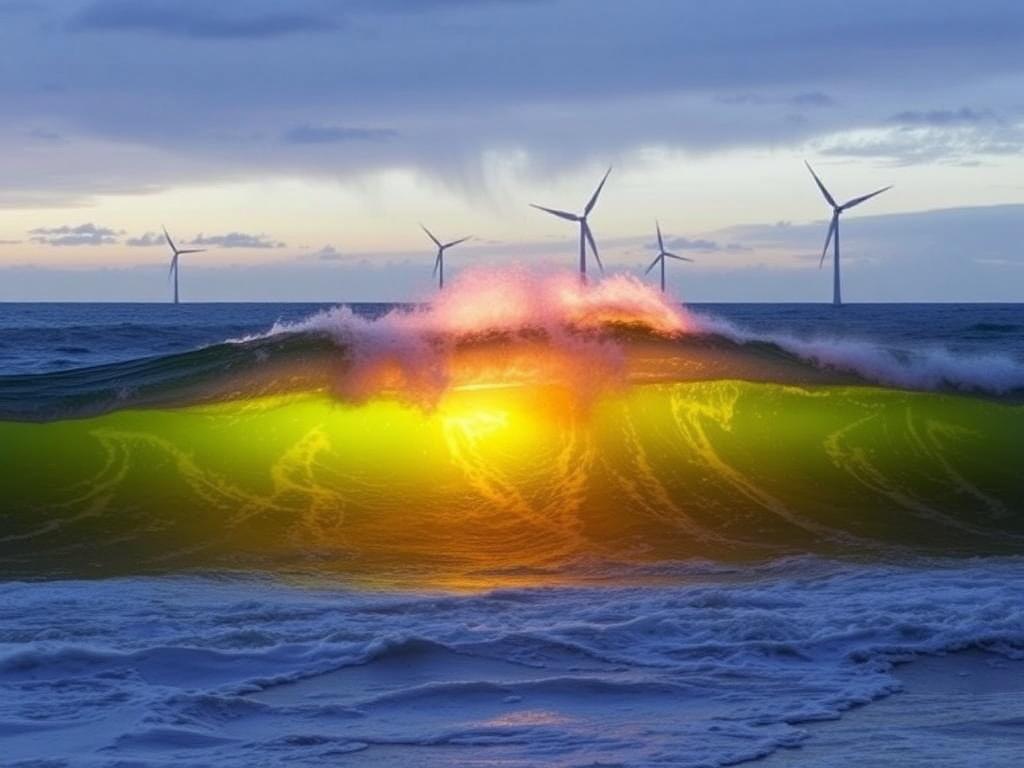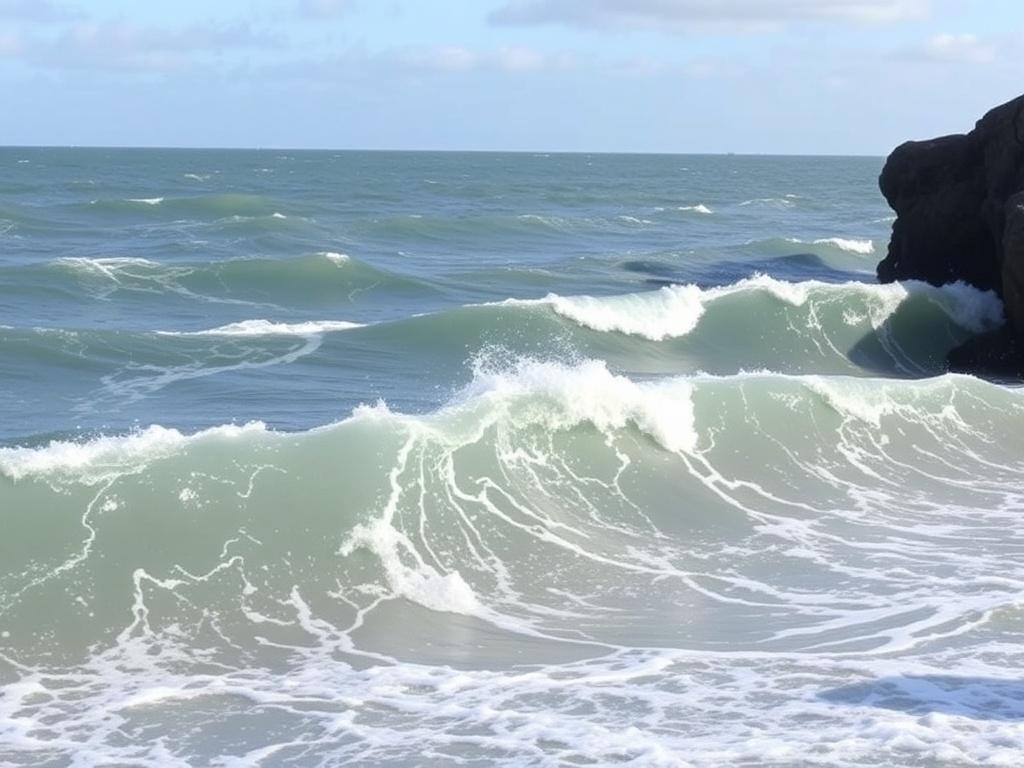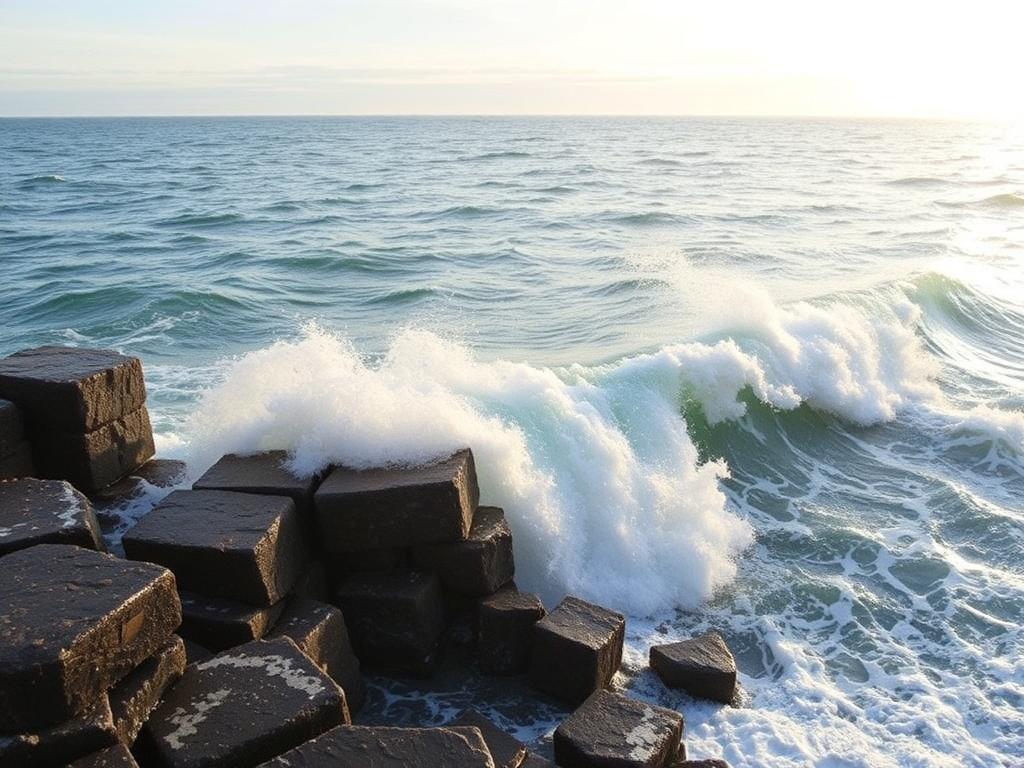- Introduction to Tidal and Wave Energy
- What is Tidal Energy?
- Understanding Wave Energy
- The Untapped Potential of Ocean Energy
- Advantages of Tidal and Wave Energy
- Challenges Facing Tidal and Wave Energy Development
- Current Technologies in Tidal and Wave Energy
- Economic and Environmental Impact
- The Future of Tidal and Wave Energy
- Summary Table: Key Benefits and Challenges of Tidal and Wave Energy
- Conclusion
Introduction to Tidal and Wave Energy
Renewable energy has become a crucial part of our quest to reduce carbon emissions and combat climate change. Among the many sources of renewable energy, tidal and wave energy stand out as some of the most promising yet underexplored options. These forms of ocean energy harness the natural movements of our seas to generate electricity, offering a reliable and consistent source compared to solar or wind power, which are more variable. Despite their massive potential, tidal and wave energy technologies remain relatively untapped, presenting an exciting frontier for energy innovation and environmental sustainability.
What is Tidal Energy?
Tidal energy is a form of hydropower that converts the energy from the rise and fall of tides into useful electricity. This energy source exploits the gravitational pull of the moon and the sun, which causes the ocean tides. Tidal energy systems capture this kinetic power using turbines or barrages placed in tidal streams, estuaries, or coastal regions. One of the unique advantages of tidal energy is its predictability. Tides follow a very consistent pattern, making it easier to forecast energy production accurately.
Tidal power can be harnessed in two main ways: tidal stream systems and tidal range systems. Tidal stream technology uses underwater turbines that work much like wind turbines, spinning with the movement of tidal currents. Meanwhile, tidal range technology involves constructing barrages or dams across tidal estuaries, creating reservoirs that release water at low tide to generate power.
Understanding Wave Energy

Unlike tidal energy, wave energy converts the surface motion of the sea waves into electricity. This energy relies on the wind blowing across the water’s surface, creating waves that carry immense power across large distances. Wave energy has the potential to generate vast amounts of electricity due to the continuous motion of ocean waves, which is one of the most consistent energy sources globally.
Wave energy converters (WECs) come in various designs, including point absorbers, oscillating water columns, and attenuators, each working with different wave motions and forces. For example, point absorbers capture energy from vertical movement, while oscillating water columns use trapped air compressed by waves to drive turbines. Attenuators align with wave direction, flexing with the waves to produce mechanical energy.
The Untapped Potential of Ocean Energy
Despite the evident promise of tidal and wave energy, these resources are surprisingly underutilized. Globally, only a few tidal energy installations exist, and commercial-scale wave power plants remain rare. Several factors contribute to this. Firstly, the upfront capital costs for developing and deploying tidal and wave energy infrastructure are high. Secondly, the marine environment poses significant technical and environmental challenges, including corrosion from saltwater, extreme weather conditions, and potential impacts on marine ecosystems.
Nonetheless, the potential of these energy sources is enormous. Ocean energy is estimated to have the capacity to provide up to 20% of the world’s electricity needs if fully developed. Countries with extensive coastlines, such as the United Kingdom, Canada, and Australia, have begun investing in tidal and wave energy projects to diversify their renewable energy portfolios and increase energy security.
Advantages of Tidal and Wave Energy
- Predictability: Unlike solar or wind, tidal patterns and wave energy can be forecasted with high accuracy, improving grid management.
- Renewability: Both energy types rely on natural forces that are inexhaustible in human timeframes.
- Environmental benefits: They produce no greenhouse gas emissions during operation, helping to reduce carbon footprints.
- Energy density: Water is much denser than air, meaning tidal and wave energy systems can produce more power from smaller generators.
- Longevity: Coastal infrastructure and ocean energy devices tend to have long operational lifetimes.
Challenges Facing Tidal and Wave Energy Development
As promising as tidal and wave energy are, deploying them at scale is not without obstacles. The biggest challenge lies in the harsh marine environment itself. Saltwater is corrosive, waves can be violent, and storms with high waves can damage equipment. Engineers must design materials and structures to withstand these tough conditions over many years without significant degradation.
Another issue is environmental concerns. While tidal and wave energy are clean energy sources, their installation and operation could affect marine habitats and wildlife. For instance, underwater turbines may interfere with fish migration or disrupt benthic ecosystems on the seabed. Careful environmental assessments and ongoing monitoring are crucial to mitigate such risks.
The economics of ocean energy are also challenging. Initial investment costs are high, and the technologies are not yet widely commercialized or standardized. As a result, the cost per kilowatt-hour produced is often higher compared to more mature renewable energy forms like wind and solar.
Current Technologies in Tidal and Wave Energy
To better understand why tidal and wave energy remain untapped, it’s useful to look at existing technologies and their applications. This table provides an overview of the primary technologies used to generate ocean energy.
| Technology | Energy Type | How it Works | Examples |
|---|---|---|---|
| Tidal Barrage | Tidal Range | Constructs a dam across tidal estuaries to trap water at high tide and release it through turbines. | La Rance Barrage (France), Sihwa Lake Tidal Power Station (South Korea) |
| Tidal Stream Turbines | Tidal Currents | Utilizes underwater turbines that spin with tidal currents. | SeaGen (UK), MeyGen (Scotland) |
| Point Absorber | Wave Energy | Floats on surface and captures energy from vertical wave motion. | Aquamarine Power’s Oyster (UK) |
| Oscillating Water Column (OWC) | Wave Energy | Uses trapped air compressing and decompressing in a chamber to drive turbines. | Mutriku Wave Power Plant (Spain) |
| Attenuator | Wave Energy | Long devices aligned with wave direction flexing with wave motion to generate power. | Pelamis Wave Power (Portugal, prototype stage) |
Economic and Environmental Impact
Investing in tidal and wave energy could offer several economic benefits. Locally, these projects can create skilled jobs in coastal areas, ranging from manufacturing and installation to maintenance and research. Given their long operational lives, these energy projects also promise sustained employment over decades. Additionally, ocean energy diversifies energy sources, enhancing energy security and reducing dependence on imported fuels.
From an environmental perspective, tidal and wave energy offer a significant advantage by reducing carbon emissions and dependence on fossil fuels. Unlike wind turbines and solar panels that require land space, ocean energy systems utilize the vast areas of coastlines and offshore waters, lessening land-use conflicts.
However, the environmental risks must be managed carefully. Environmental monitoring programs help ensure marine life is protected, and technological innovation aims to design devices that minimize ecological disruption.
The Future of Tidal and Wave Energy
The future of tidal and wave energy looks brighter than ever, thanks to growing investments in research and development. Emerging technologies are addressing many challenges associated with costs, durability, and environmental impacts. Innovations such as advanced materials resistant to corrosion, improved turbine designs, and smarter energy grid integration systems are bringing tidal and wave energy closer to commercial viability.
Government policies and public-private partnerships are also crucial. Subsidies, grants, and regulatory support can lower the risks for investors and accelerate the deployment of new projects. Countries including the UK, Canada, and Australia are at the forefront, setting ambitious targets for marine energy production.
Moreover, tidal and wave energy can complement other renewables in hybrid systems, enhancing the stability and reliability of renewable energy grids. By working together with wind and solar, ocean energy could fill gaps during calm or cloudy days, ensuring a continuous power supply.
Summary Table: Key Benefits and Challenges of Tidal and Wave Energy

| Aspect | Benefits | Challenges |
|---|---|---|
| Reliability | Predictable tidal patterns; continuous wave motion. | Storms and extreme weather can disrupt operations. |
| Environmental Impact | No emissions during operation; low land use. | Potential impacts on marine ecosystems; installation disturbances. |
| Cost | Long-term energy cost savings. | High upfront capital and development costs. |
| Technology | Innovative designs increasing efficiency. | Corrosion, material degradation; scale-up difficulties. |
| Energy Density | Higher than air-based renewables due to water density. | Requires specific geographic sites with strong tides or waves. |
Conclusion

Tidal and wave energy represent a fascinating, largely untapped opportunity to diversify our global energy supply with clean, predictable, and powerful renewable resources. While challenges remain—particularly in technology development, environmental impact, and cost—advancements in design, materials, and policy support are helping to unlock their potential. As we search for sustainable energy solutions to secure our planet’s future, investing in tidal and wave energy could play an essential role in meeting our climate goals, boosting local economies, and driving innovation in the renewable energy sector. By better understanding and embracing the power of our oceans, we move closer to a cleaner, more resilient energy future for generations to come.
Как вам статья?







